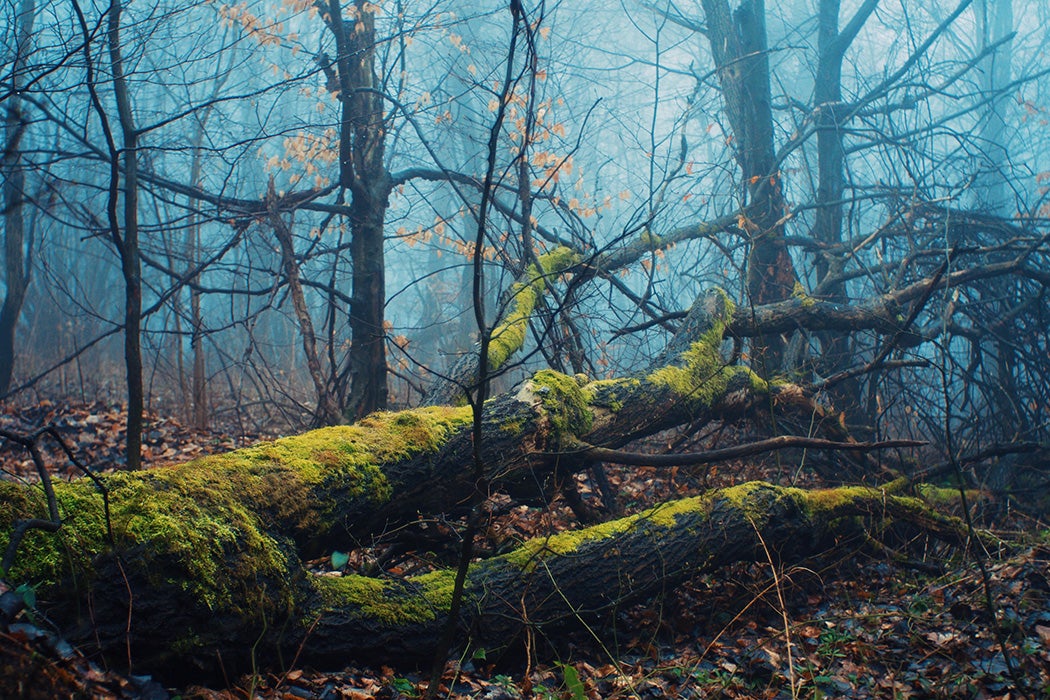When walking in the woods, most people spend their time looking up at the trees—but if they divert their attention to the ground, a whole new habitat awaits.
Dead wood, also known as coarse woody material, is composed of the trees, twigs, and branches that have died and fallen to the ground. Foresters used to remove dead wood because it was once thought of as unsightly. Today, keeping dead wood on the ground has become a priority in forests around the world.
When a tree dies naturally or falls due to extreme weather events, new life springs forward. Fungi communities flourish on dead wood, salamanders create breeding grounds, and saplings grow on the nutrient-rich bark. But this doesn’t happen overnight. According to researchers Harri Mäkinen, Jari Hynynen, Juha Siitonen, and Risto Sievänen, it can take up to 100 years or more for wood to decompose, depending on the species and forest type.
In a review paper, researchers Fred L. Bunnell and Isabelle Houde collected data on dead wood from forests around the world, describing the ways it’s ultimately important in all kinds of forests, from Sweden to the Pacific Northwest.
Dead wood itself is easy to find in the forest, but identifying which species it is can be difficult, depending on how decayed the wood is. There are five stages of decay, ranging from just fallen to decomposed so heavily that it nearly resembles soil.
Some studies cited by Bunnell and House estimate that dead wood can comprise up to 40 percent of the total wood volume in a stand that doesn’t have active logging or tree harvesting. Forests that are managed for logging or ecological purposes tend to have less dead wood, which can have ripple effects on species, nutrient balance, and carbon storage.
Weekly Newsletter
But there is still a lot to discover about dead wood, despite the fact that it has always been a part of forests. Bunnell and Houde write, “There are no data to unequivocally estimate what is ‘enough’” dead wood. So how much does a forest really need? Based on surveys, Bunnell and Houde suggest keeping up to 50 percent of fallen debris to assure that plant, lichen, and animal species have enough habitat, but this recommendation is likely to evolve with more research.
Bunnell and Houde also report that most forests don’t have enough dead wood and urge forest managers to look at the whole forest, not just the trees. “Dead wood is part of a continuum from living trees to soil,” write the authors. “Retaining live trees is the only way to ensure future dead wood.”







